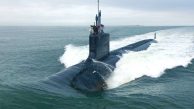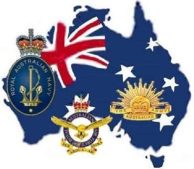
Why Did Three PLA Navy Ships Circumnavigate Australia?
CLICK ON THE LINK BELOW TO READ THE CNN article
Why new Chinese maritime tech is spooking defense watchers | CNN
ED: An email from Bob Buick on the subject prompted me to put together my thoughts as to why the Chinese ship were in our waters.
Why Did PLA Navy Ships Circumnavigate Australia?
By Ray Payne OAM
Recently, warships from the People’s Liberation Army Navy (PLAN) completed a circumnavigation of Australia. On the surface, it might appear as a routine “freedom of navigation” operation or a training exercise. But when viewed through a broader strategic lens, I believe there’s a more pointed reason behind this Southern Hemisphere cruise.
The Chinese, I suspect, are conducting a form of strategic reconnaissance — not for geography or naval exercise alone, but to map the undersea communications cable network that wraps around our continent.
In the modern world, over 95% of global data — including internet traffic, financial transactions, and military communications — travels through undersea fibre-optic cables. These cables are the silent arteries of the global information network. They’re largely unprotected, and their locations are well-documented in civilian mapping data.
Should conflict erupt over Taiwan — and drag in the US, Japan, Australia, and other allies — one of the first moves in a broader information and cyber war would likely be the severing of these cables. This would effectively isolate countries like Australia from real-time coordination with allies. It would be a strategic masterstroke: cripple communication, sow confusion, and delay any unified military or political response.
Satellites would also be prime targets in such a conflict. Communication, navigation (including GPS), and surveillance satellites are all vulnerable to anti-satellite weapons (ASATs) — and China has demonstrated capabilities in this area. In a matter of hours, the digital lattice that underpins modern defence and civilian life could collapse.
In such a scenario, we would see a rapid reversion to legacy communication systems. HF radio, encrypted Morse code, and even physically couriered messages could once again play a vital role in military coordination. Civilian and military infrastructure would need to fall back on systems many believed were obsolete — though, ironically, some have kept these systems alive precisely because of this risk.
Those PLAN vessels weren’t just stretching their sea legs. I believe they were scanning, mapping, and perhaps even deploying remote sensing equipment or underwater drones to mark key data choke points.
We ignore this at our peril. Australia must assume that our undersea cable infrastructure is already marked and mapped by potential adversaries. Hardening these systems, establishing redundancies, and investing in secure, alternative communication channels should be seen as vital national security priorities.
We’re not just talking about the internet going down — we’re talking about digital isolation in the opening hours of a modern war.




I agree.